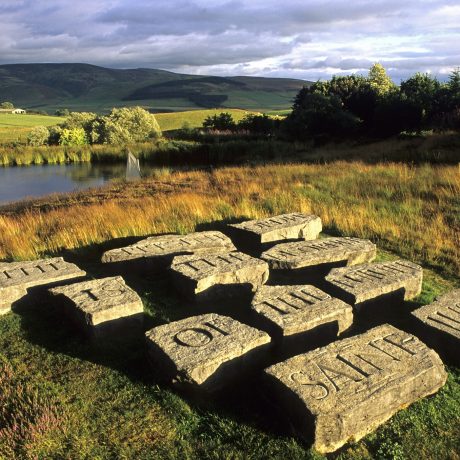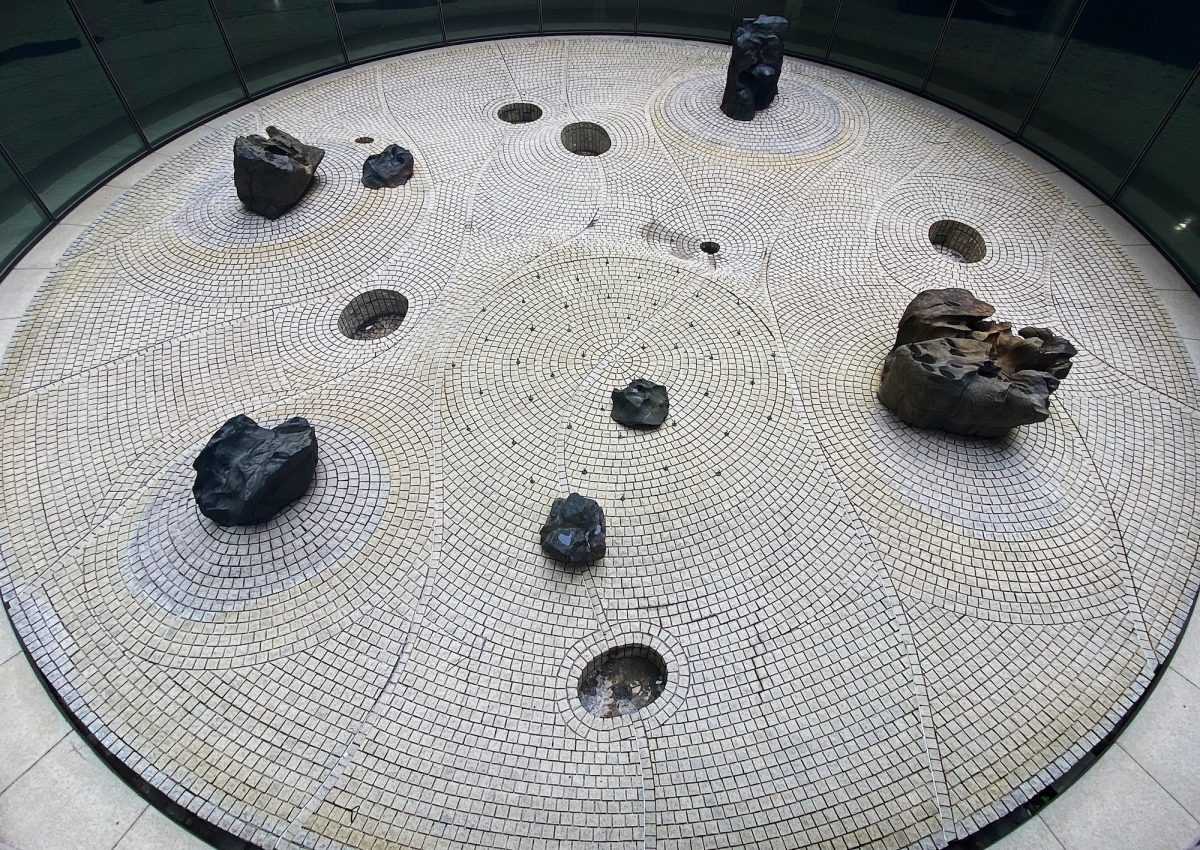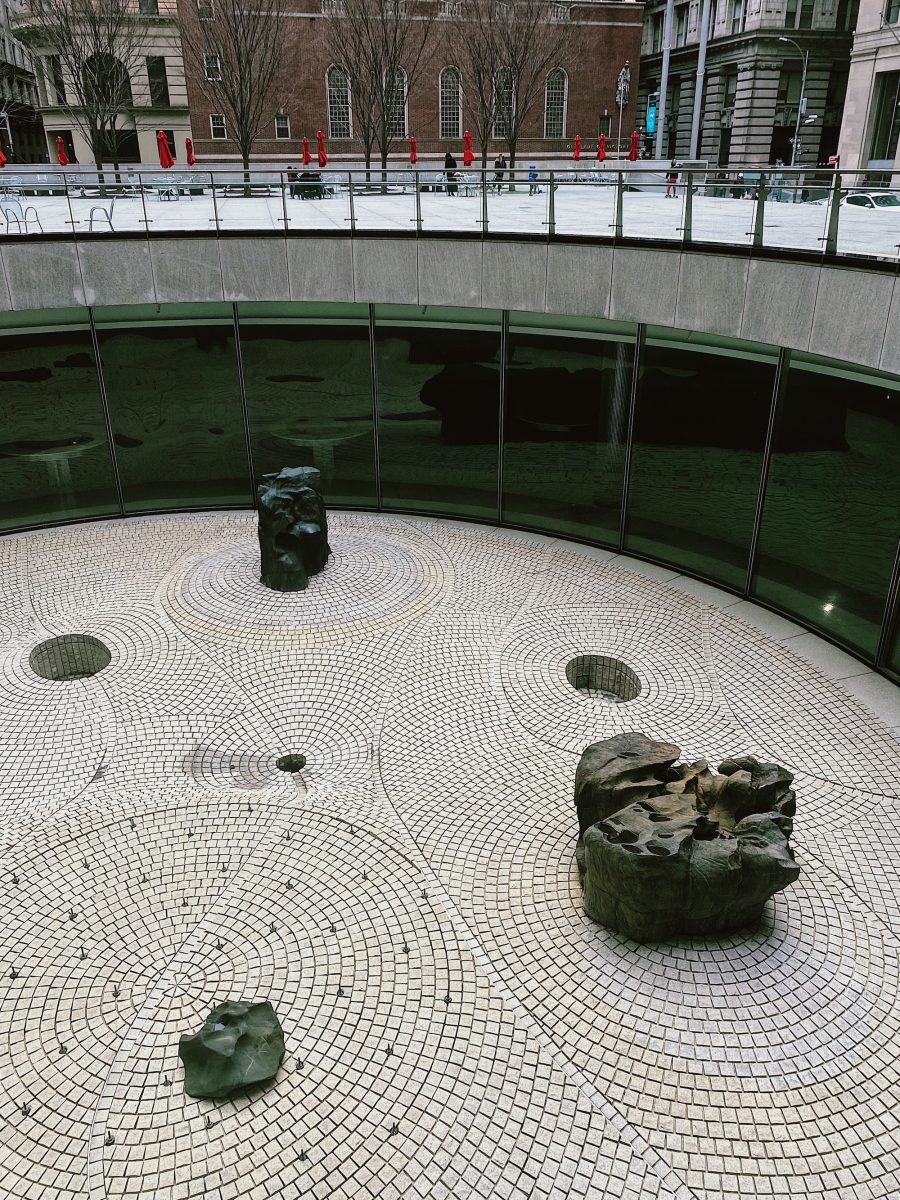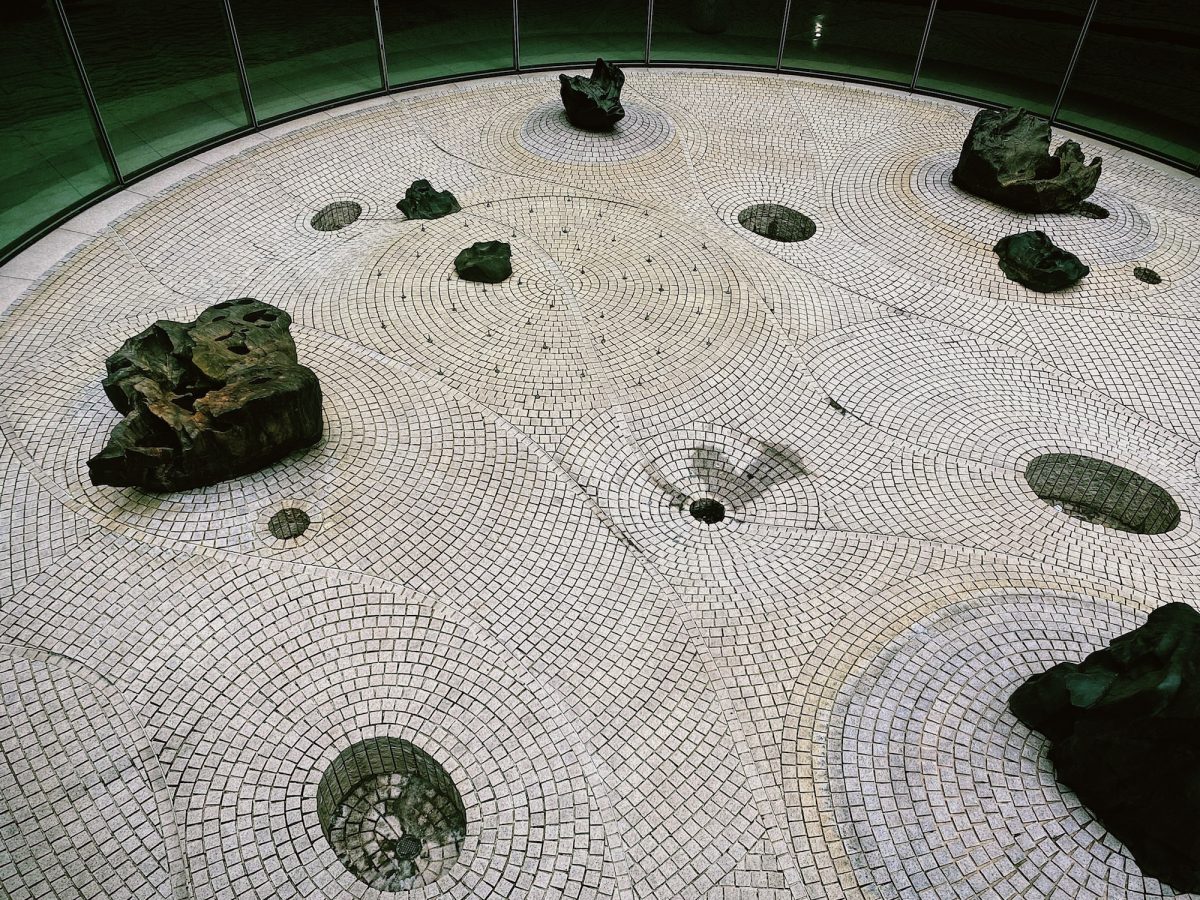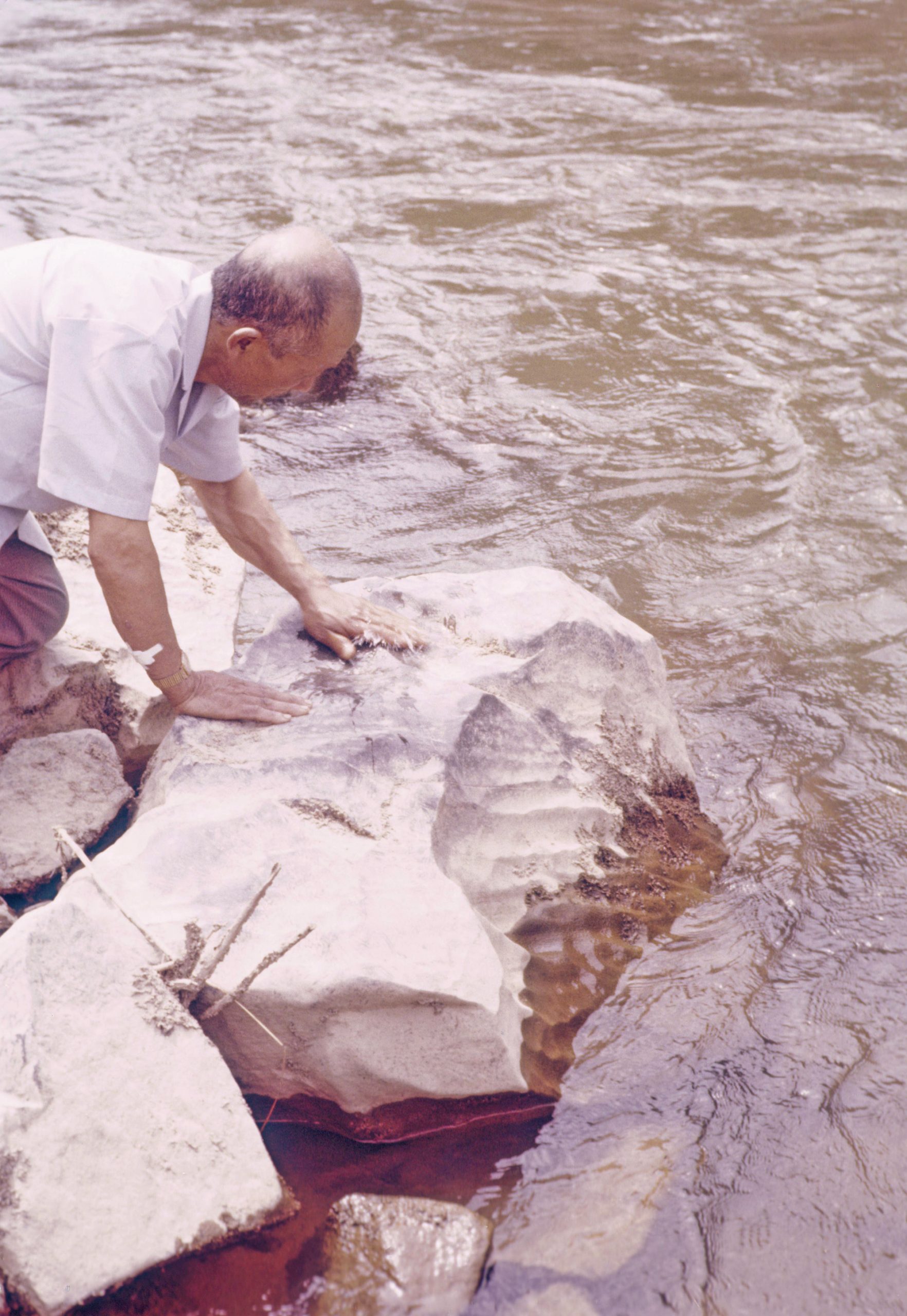
Stone Fishing in the Uji River (Japan) for elements for Sunken Garden for Chase Manhattan Bank Plaza, c. 1960s. Courtesy The Noguchi Museum Archives © The Isamu Noguchi Foundation and Garden Museum, ARS, DACS
From museums to galleries, national treasures to significant little-known spots, each edition of Out Of The Ordinary offers up a virtual tour of an unmissable global art location.
Installed amidst towering skyscrapers and swaths of concrete is a meditative space meant to draw the eye down. Isamu Noguchi’s Sunken Garden in downtown Manhattan is a circular garden located below plaza level. The work, completed between 1961 and 1964, counterbalances the adjacent 60-story office building designed by Skidmore, Owings & Merrill.
Noguchi drew inspiration for the design from traditional Japanese zen gardens while also incorporating his own distinctive techniques. Arranged within the boundary of the garden are seven black boulders originating from the bottom of Kyoto’s Uji River. The boulders sit atop granite bricks laid out in a pattern of concentric circles. The surface, full of gentle slopes, echoes the movement of water, and Noguchi also incorporated a European-style fountain that operates during summer months
Enclosed by glass casings on all sides, Noguchi intended the garden to be observed at a distance, once referring to it as “my Ryoanji,” the temple garden in Kyoto that is also inaccessible.
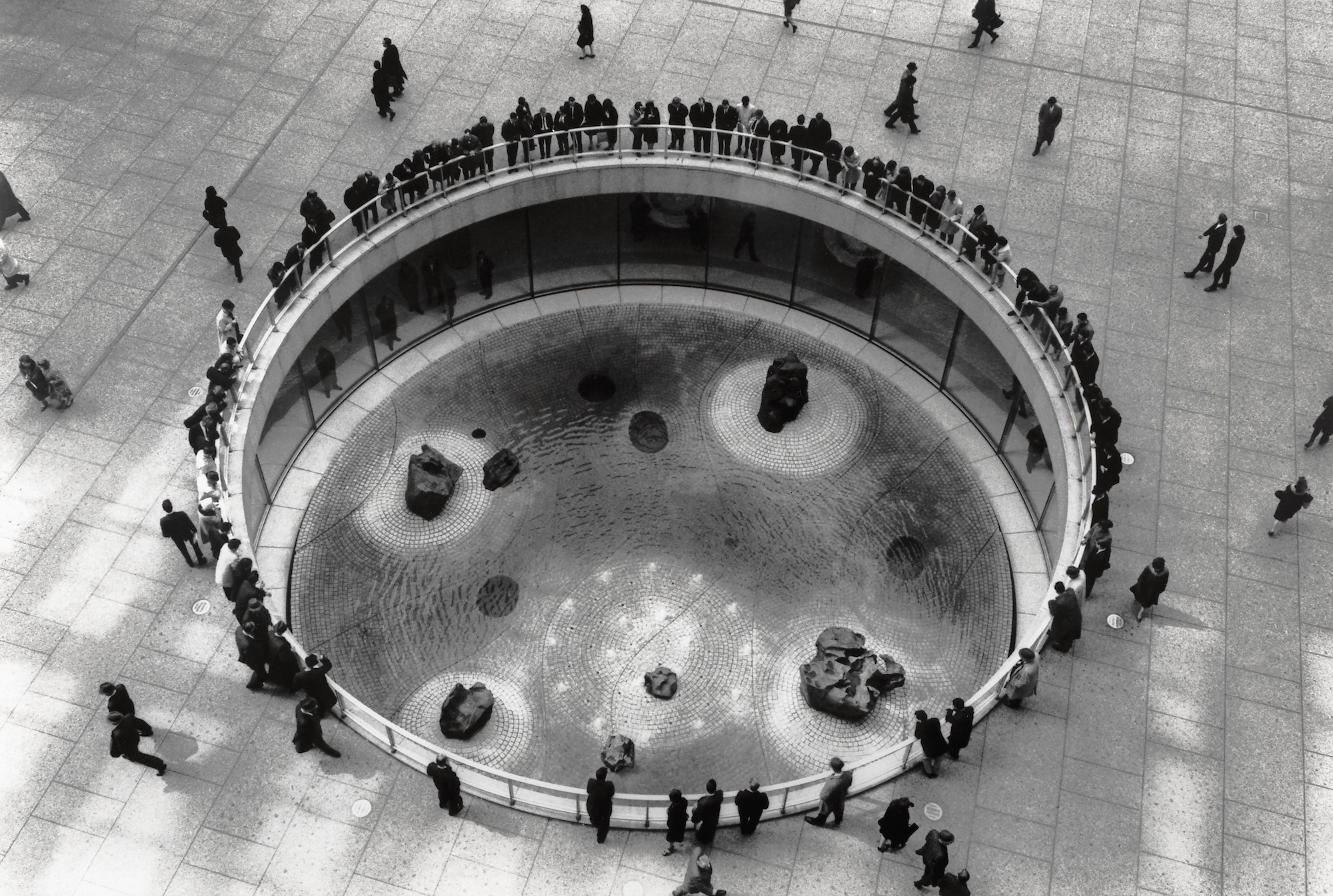
Who
Japanese-American artist Isamu Noguchi (1904-88) is one of the most important sculptors of the 20th century. His distinct oeuvre is extensive and includes sculpture, gardens, furniture, ceramics, playgrounds, set designs and lighting. Though identified with modernism and abstraction, Noguchi’s work exists outside the strictures of any one movement. During his career he collaborated with countless influential figures including choreographers Martha Graham and George Balanchine, stone carver Masatoshi Izumi and the architect Louis Kahn. Many of Noguchi’s mass-produced works, such as an Akari light sculpture and glass-topped table, are still in production today.
In 1985, Noguchi opened what is now known as The Noguchi Museum in Long Island City, New York. Established and designed by the artist to display his life’s work, the museum includes an outdoor sculpture garden and two floors of open air and indoor galleries. Noguchi was chosen to represent the US at the 1986 Venice Biennale and awarded many prestigious honours including the Edward MacDowell Medal for Outstanding Lifetime Contribution to the Arts and the National Medal of Arts.
“The boulders sit atop granite bricks laid out in a pattern of concentric circles. The surface, full of gentle slopes, echoes the movement of water”
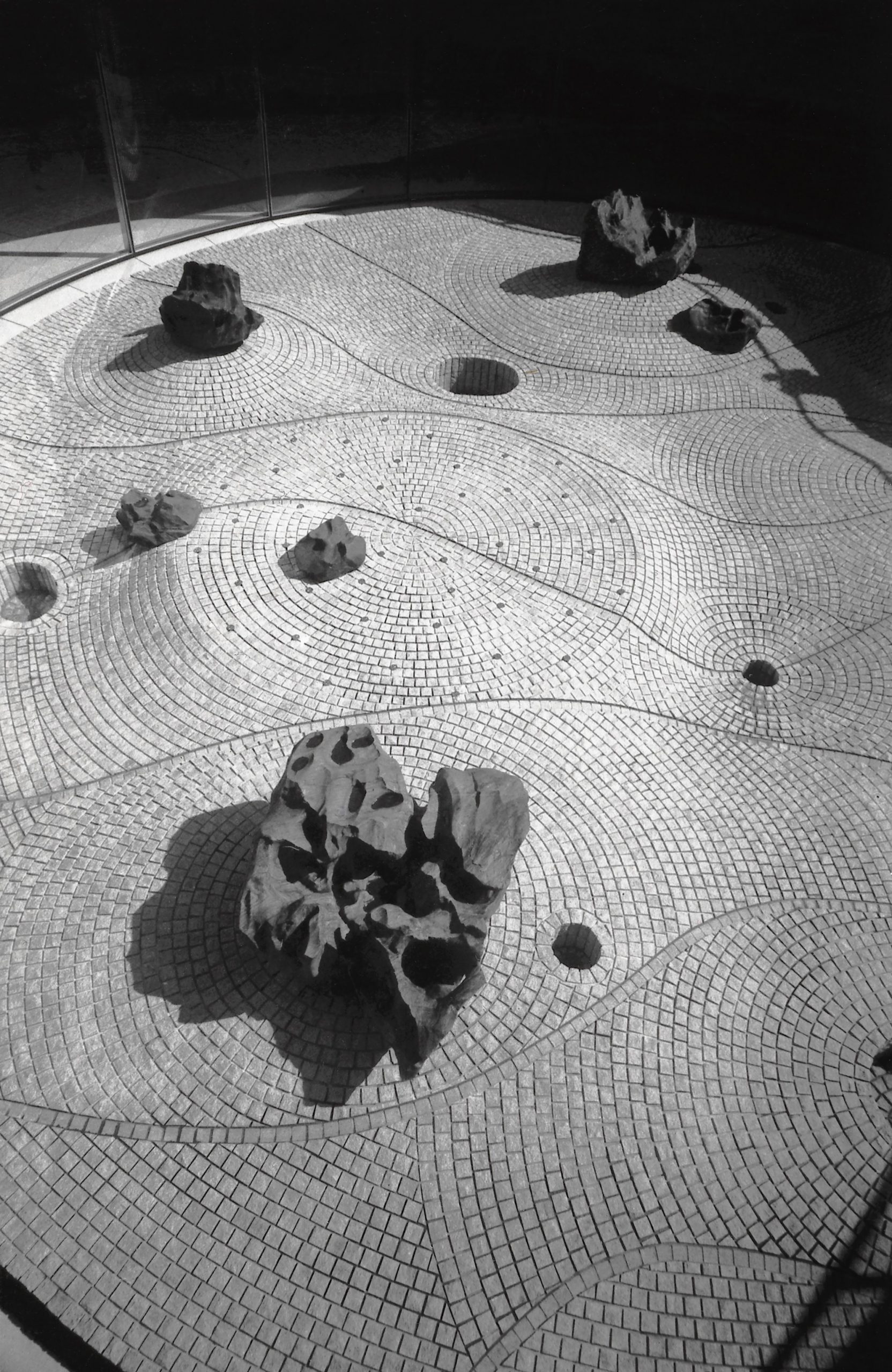
Where
Sunken Garden is located at 28 Liberty Street, formerly One Chase Manhattan Plaza, in New York City’s Wall Street neighbourhood. The plaza was commissioned by Chase Manhattan Bank for their downtown office building, and architect Gordon Bunshaft of Skidmore, Owings & Merrill, who had collaborated with Noguchi on previous projects, tapped him to create a work of art for it. Noguchi designed Sunken Garden to be visible from above or from the side, with the idea that it can only be observed, not entered.
Currently, the work can be viewed from plaza level, where a circular railing borders the piece. In the past, a retail space below the plaza allowed curious sightseers to view Sunken Garden from ground level as well, however the area is currently undergoing construction work and closed to the public.
“Noguchi designed Sunken Garden online pharmacy actos no prescription pharmacy to be visible from above or from the side, with the idea that it can only be observed, not entered”
Why
Sunken Garden is an embodiment of the artist’s interest in art and architecture’s connection to nature. The piece includes references and reflections on the natural world in both the materials and structure, but it is also a cohesive part of the urban site in which it sits. Noguchi believed that public spaces were essential to any community, and Sunken Garden acts as an unexpected meditative area in the middle of the chaos of Wall Street. Its presence in a busy quarter offsets the sharpness of the skyscrapers and concrete plazas that surround it.
is a freelance writer based in New York City
